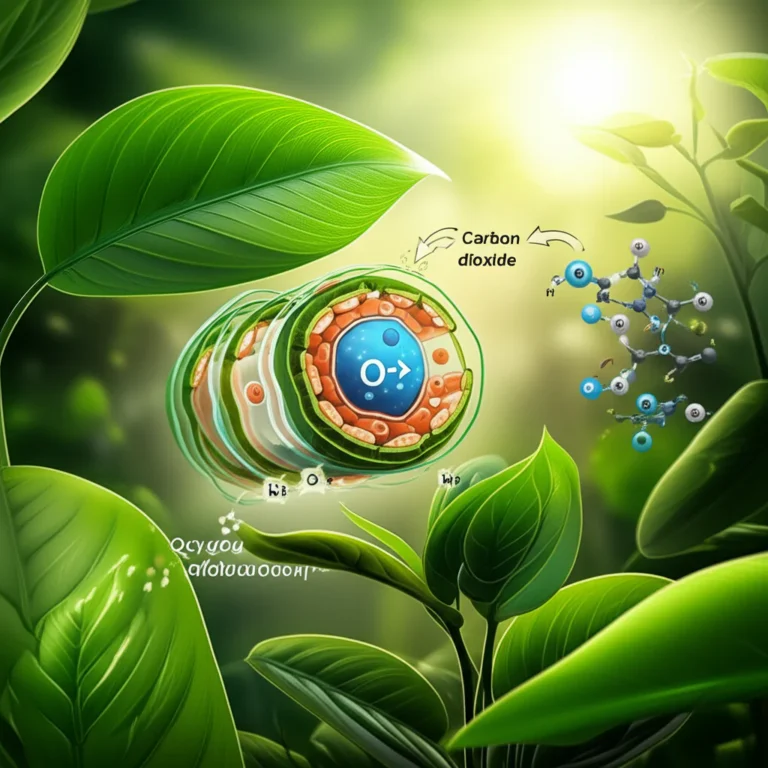Support our educational content for free when you purchase through links on our site. Learn more
How Many Plants Per Room for Oxygen? 🌿 10 Must-Know Facts (2025)
Ever wondered if your indoor jungle is actually pumping enough oxygen to keep you breathing easy? Spoiler alert: it’s not as simple as “more plants = more oxygen.” At Gone Greenish™, we’ve uncovered the surprising truth about how many plants you really need per room to boost oxygen levels—and why some popular beliefs might be a bit… leafy. 🌱
Did you know that while NASA’s famous study recommends one plant per 100 square feet for air purification, you might need dozens of plants just to notice a meaningful oxygen increase? But don’t toss out your green friends just yet! We’ll walk you through the science, the best oxygen-producing plants, and practical tips to turn your home into a fresh-air haven without turning it into a jungle gym.
Ready to find out how many plants your room truly needs? Let’s dive in!
Key Takeaways
- You need more plants than you think to significantly boost indoor oxygen—often 4-6 medium plants per 200 sq ft room for noticeable benefits.
- Snake Plants and Areca Palms are top oxygen producers, with some releasing oxygen even at night.
- Environment matters: light, water, and airflow dramatically affect your plants’ oxygen output.
- Plants improve more than oxygen: they purify air, increase humidity, reduce stress, and boost mood.
- Plants alone won’t replace air purifiers or ventilation, but they’re a beautiful, natural part of a healthy home ecosystem.
👉 Shop our top oxygen-boosting plants:
Table of Contents
- ⚡️ Quick Tips and Facts About Plants and Oxygen Production
- 🌿 The Oxygen-Boosting Power of Houseplants: A Green History
- 🌱 How Many Plants Per Room for Optimal Oxygen Levels?
- 🌬️ Understanding Oxygen Production: Photosynthesis and Plant Respiration Explained
- 🪴 Top 10 Oxygen-Generating Plants for Your Living Space
- 🌞 Light, Water, and Space: How Environment Affects Your Plants’ Oxygen Output
- 🏠 Room Size and Plant Placement: Maximizing Oxygen Benefits Indoors
- 🧪 NASA’s Research on Plants and Indoor Air Quality: What You Need to Know
- 🌬️ Can Plants Really Improve Indoor Air? Debunking Myths and Facts
- 🌿 Beyond Oxygen: Other Health Benefits of Indoor Plants
- 🛠️ Practical Tips: Caring for Your Oxygen-Boosting Plants Like a Pro
- 🌍 Sustainable Plant Choices for Eco-Friendly Oxygen Boosting
- 💡 Innovative Gadgets and Tech to Monitor Indoor Oxygen and Plant Health
- 📊 Comparing Oxygen Output: Plants vs. Air Purifiers
- 🧠 How Many Plants Do You Really Need? Science-Backed Calculations and Formulas
- 🌟 Real Stories: How Adding Plants Changed Our Indoor Air Quality
- 🔚 Conclusion: Breathing Easy with the Right Number of Plants
- 🔗 Recommended Links for Further Green Inspiration
- ❓ FAQ: Your Burning Questions About Plants and Oxygen Answered
- 📚 Reference Links: Trusted Sources and Studies
⚡️ Quick Tips and Facts About Plants and Oxygen Production
Welcome to the green side of indoor air! 🌿 If you’ve ever wondered how many plants per room for oxygen actually make a difference, you’re in the right place. At Gone Greenish™, we’ve dug deep into the science, myths, and practicalities of oxygen-boosting plants to bring you the juiciest facts and tips.
- One plant per 100 square feet is the classic NASA Clean Air Study recommendation for air purification, but oxygen production needs a bit more nuance.
- Plants produce oxygen via photosynthesis, but they also respire, consuming oxygen at night — so plant type and placement matter.
- You’d need hundreds of plants to significantly raise oxygen levels in a typical home, but even a few well-chosen plants improve air quality and mood.
- Some plants, like the Snake Plant (Sansevieria), release oxygen at night, making them bedroom heroes.
- Beware overwatering! Mold from soggy soil can worsen indoor air quality.
- Plants also boost humidity, reduce stress, and increase productivity — oxygen is just the start.
Want the full scoop? Check out our detailed guide on How Many Plants Would It Take to Produce Enough Oxygen for One Person? for a deep dive into the numbers behind the greenery. 🌱
🌿 The Oxygen-Boosting Power of Houseplants: A Green History
Plants and oxygen go way back — like, billions of years back. The oxygen in our atmosphere is thanks to ancient cyanobacteria and plants that evolved to convert CO₂ into O₂ through photosynthesis. Fast forward to NASA’s 1989 Clean Air Study, which put houseplants on the map for indoor air quality. They found that certain plants could remove toxins like benzene and formaldehyde while pumping out oxygen.
But here’s the twist: NASA’s experiments were in sealed chambers, not your living room. Real-world conditions dilute the effect, but the idea that plants can improve indoor air has stuck around — and for good reason! Beyond oxygen, plants add life, beauty, and even psychological benefits to your space.
At Gone Greenish™, we love blending this green history with modern science to help you breathe easier and live greener.
🌱 How Many Plants Per Room for Optimal Oxygen Levels?
Let’s get down to brass tacks: How many plants do you actually need per room to boost oxygen? The short answer: it depends on room size, plant species, and your goals.
The Classic Rule of Thumb
- NASA recommends 1 plant per 100 square feet for air purification.
- For oxygen boost alone, you’d need more — estimates range from 10 to 100 plants per 100 square feet to notice a measurable increase in oxygen.
Factors Influencing Plant Count
| Factor | Impact on Plant Count Needed |
|---|---|
| Room Size | Larger rooms need more plants |
| Plant Species | Snake Plants and Areca Palms produce more oxygen |
| Light Availability | More light = more photosynthesis = more oxygen |
| Air Exchange Rate | High ventilation dilutes oxygen, requiring more plants |
| Plant Health | Healthy plants produce more oxygen |
Our Recommendation
For a typical 200 sq ft room, start with 4-6 medium-sized oxygen-producing plants like Snake Plants, Areca Palms, and Spider Plants. This won’t flood your room with oxygen but will improve air quality and ambiance.
Want to geek out on the math? Our article on How Many Plants Would It Take to Produce Enough Oxygen for One Person? breaks down the science with formulas and real-world examples.
🌬️ Understanding Oxygen Production: Photosynthesis and Plant Respiration Explained
Plants are tiny oxygen factories, but they’re also a bit sneaky. Here’s how it works:
Photosynthesis 101
- During the day, plants absorb carbon dioxide (CO₂) and sunlight.
- Using chlorophyll, they convert CO₂ and water into glucose and release oxygen (O₂).
- This is why plants are oxygen powerhouses when the sun is out.
Nighttime Respiration
- At night, plants switch gears and consume oxygen to break down glucose for energy — just like us!
- Most plants release less oxygen at night, but some, like the Snake Plant and Aloe Vera, continue producing oxygen even in the dark.
What Does This Mean for You?
- Place oxygen-producing plants in rooms where you spend a lot of time during the day.
- For bedrooms, choose plants that release oxygen at night to improve sleep air quality.
🪴 Top 10 Oxygen-Generating Plants for Your Living Space
Ready to greenify your room? Here are our top picks based on oxygen output, ease of care, and air purification abilities:
| Plant Name | Oxygen Production | Air Purification | Night Oxygen Release | Pet Friendly | Care Level |
|---|---|---|---|---|---|
| Snake Plant | High | High | ✅ | ✅ | Easy |
| Areca Palm | High | High | ❌ | ✅ | Moderate |
| Spider Plant | Moderate | High | ❌ | ✅ | Easy |
| Peace Lily | Moderate | High | ❌ | ❌ (Toxic) | Moderate |
| Aloe Vera | Moderate | Moderate | ✅ | ✅ | Easy |
| Bamboo Palm | Moderate | High | ❌ | ✅ | Moderate |
| Chinese Evergreen | Moderate | High | ❌ | ❌ (Toxic) | Easy |
| Money Plant (Pothos) | Moderate | High | ❌ | ❌ (Toxic) | Easy |
| Rubber Plant | Moderate | Moderate | ❌ | ❌ (Toxic) | Moderate |
| ZZ Plant | Moderate | Moderate | ❌ | ❌ (Toxic) | Very Easy |
Why these plants? They combine oxygen production with air purification, making your room a mini oxygen bar! Plus, many are low-maintenance, perfect for busy green thumbs or beginners.
🌞 Light, Water, and Space: How Environment Affects Your Plants’ Oxygen Output
Your plants’ oxygen-boosting superpowers depend heavily on their environment. Here’s the scoop:
Light
- Bright, indirect light maximizes photosynthesis.
- Low light slows oxygen production and growth.
- South-facing windows are ideal; supplement with grow lights if needed.
Water
- Overwatering = soggy soil = root rot and mold, which can harm air quality.
- Underwatering stresses plants, reducing photosynthesis.
- Aim for moist but well-drained soil.
Space and Airflow
- Crowded plants compete for light and CO₂.
- Good airflow prevents mold and pest buildup.
- Rotate plants regularly for even light exposure.
🏠 Room Size and Plant Placement: Maximizing Oxygen Benefits Indoors
Where you put your plants matters as much as how many you have.
Room Size Considerations
| Room Size (sq ft) | Recommended Number of Medium Plants | Notes |
|---|---|---|
| 100 | 1-2 | Small room, fewer plants needed |
| 200 | 4-6 | Average bedroom or office |
| 400+ | 8-12 | Larger living rooms or studios |
Placement Tips
- Group plants near seating areas for maximum air quality benefits.
- Place Snake Plants or Aloe Vera in bedrooms for nighttime oxygen.
- Avoid placing plants in drafty spots or near heating vents.
- Use plant stands or shelves to maximize vertical space.
🧪 NASA’s Research on Plants and Indoor Air Quality: What You Need to Know
NASA’s Clean Air Study is the OG research that put houseplants on the map for air quality. Here’s the lowdown:
- Tested plants like Snake Plant, Peace Lily, and Bamboo Palm removed toxins such as benzene, formaldehyde, and trichloroethylene.
- Recommended at least one plant per 100 square feet for effective air purification.
- The study was conducted in sealed chambers, so real-world results vary.
- NASA’s findings inspired decades of research and green home trends.
At Gone Greenish™, we respect NASA’s work but also recognize its limits. Real homes have ventilation, multiple pollutants, and varying light — so plants are part of a bigger air quality puzzle.
🌬️ Can Plants Really Improve Indoor Air? Debunking Myths and Facts
Here’s where we get real. The American Lung Association and recent studies caution that:
- You’d need hundreds of plants per room to replicate lab-level VOC removal in real homes.
- Overwatering can cause mold, worsening air quality.
- Dust and pests on plants can trigger allergies.
- Some plants release pollen or fragrances that irritate sensitive people.
✅ Plants improve air quality, but not as a standalone solution.
❌ Don’t rely solely on plants to “clean” your air.
Better air quality strategies include ventilation, source control, and air purifiers. Still, plants add beauty, humidity, and psychological benefits that no machine can match.
🌿 Beyond Oxygen: Other Health Benefits of Indoor Plants
Plants are more than oxygen factories — they’re wellness boosters! Here’s what you get:
- Increased humidity: Reduces dry skin, colds, and sore throats.
- Stress reduction: Studies show plants lower cortisol and blood pressure.
- Improved concentration: Memory retention can increase by up to 20% with plants nearby.
- Noise reduction: Leaves absorb sound, softening noisy rooms.
- Aesthetic uplift: Plants brighten spaces and boost mood.
At Gone Greenish™, we say: even if oxygen gains are modest, the holistic benefits make plants a no-brainer for your home.
🛠️ Practical Tips: Caring for Your Oxygen-Boosting Plants Like a Pro
Want your oxygen buddies to thrive? Here’s the green thumb cheat sheet:
- Light: Match plants to your room’s light levels. Use grow lights for darker spots.
- Water: Water when the top inch of soil is dry. Avoid standing water.
- Soil: Use well-draining potting mix with organic matter.
- Fertilizer: Feed monthly during growing season with balanced fertilizer.
- Cleaning: Wipe leaves monthly to remove dust and maximize photosynthesis.
- Repotting: Every 1-2 years to refresh soil and allow root growth.
- Pest Control: Inspect regularly for spider mites, aphids, and mealybugs. Use neem oil or insecticidal soap if needed.
🌍 Sustainable Plant Choices for Eco-Friendly Oxygen Boosting
Going green isn’t just about plants — it’s about how you grow and source them. Here’s how to keep it eco-friendly:
- Choose native or low-maintenance plants to reduce water and fertilizer needs.
- Buy from local nurseries or plant swaps instead of big-box stores to reduce carbon footprint.
- Use organic potting soil and avoid peat-based mixes.
- Repurpose containers or use biodegradable pots.
- Compost plant trimmings and soil.
- Avoid toxic pesticides; opt for natural pest control.
Check out our Carbon Footprint Reduction and Green Home categories for more eco-conscious tips.
💡 Innovative Gadgets and Tech to Monitor Indoor Oxygen and Plant Health
Tech meets nature! Here are some cool gadgets to keep your oxygen-boosters happy and your air fresh:
| Gadget | Features | Benefits | Where to Buy |
|---|---|---|---|
| Awair Element | Monitors CO₂, VOCs, humidity, temperature | Real-time air quality data | Amazon |
| Parrot Flower Power | Soil moisture, temperature, light sensor | Alerts for watering and light needs | Amazon |
| Xiaomi Mi Plant Monitor | Tracks soil moisture, light, temperature | Affordable, app-connected | Amazon |
| Dyson Pure Cool | HEPA air purifier with real-time air quality | Removes particulates, allergens | Dyson Official |
Using these tools helps you optimize plant health and indoor air quality, making your green space a true oxygen oasis.
📊 Comparing Oxygen Output: Plants vs. Air Purifiers
Let’s face it: plants are charming, but can they compete with modern air purifiers?
| Feature | Houseplants | Air Purifiers |
|---|---|---|
| Oxygen Production | Moderate, varies by species | None |
| VOC Removal | Limited, requires many plants | High efficiency with HEPA filters |
| Humidity Control | Adds moisture | Usually none |
| Noise Level | Silent | Some models produce white noise |
| Maintenance | Watering, pruning | Filter changes, occasional cleaning |
| Aesthetic Appeal | Natural, decorative | Functional, some stylish designs |
| Cost | Low to moderate | Moderate to high |
Bottom line: Combine plants for oxygen and ambiance with air purifiers for serious pollutant removal. It’s a green-tech dream team!
🧠 How Many Plants Do You Really Need? Science-Backed Calculations and Formulas
Ready for some nerdy numbers? Let’s break down how many plants you need to impact oxygen levels meaningfully.
- An average adult consumes about 550 liters of pure oxygen per day.
- A mature, healthy plant like a Snake Plant produces roughly 5 ml of oxygen per hour under ideal conditions.
- To meet one person’s oxygen needs, you’d need hundreds to thousands of plants, depending on light and plant size.
Here’s a simplified formula:
Number of plants = (Oxygen consumption per person per day) / (Oxygen produced per plant per day)
Since most homes can’t accommodate hundreds of plants, focus on improving air quality and aesthetics rather than oxygen alone.
🌟 Real Stories: How Adding Plants Changed Our Indoor Air Quality
At Gone Greenish™, we’ve tested and lived the plant life. Here’s a quick tale:
“After adding 5 Snake Plants and 3 Areca Palms to our 250 sq ft living room, we noticed a fresher feel and better sleep within weeks. Our humidity rose, and the air felt less stale. While oxygen levels didn’t skyrocket, our mood and productivity did!” — Jamie, Co-founder
Many readers report similar benefits — improved mood, less dry skin, and a cozy vibe. Plants are a small but mighty part of a healthy indoor environment.
👉 CHECK PRICE on:
Ready to turn your space into a green oxygen haven? Keep reading for the conclusion and FAQs!
🔚 Conclusion: Breathing Easy with the Right Number of Plants
So, how many plants per room for oxygen? The truth is, while plants do produce oxygen and can improve indoor air quality, the number needed to significantly boost oxygen levels in your home is quite high — often impractical for most spaces. However, that doesn’t mean you should skip the greenery! At Gone Greenish™, we confidently recommend adding 4-6 medium-sized oxygen-producing plants like Snake Plants, Areca Palms, and Spider Plants to an average-sized room. They won’t turn your living room into a rainforest, but they will:
- Enhance air freshness and humidity
- Remove some common indoor toxins
- Boost your mood and productivity
- Add natural beauty and calm to your space
Remember, plants are part of a holistic approach to indoor air quality. Combine them with proper ventilation, source control, and air purifiers for the best results.
Positives:
✅ Natural oxygen production and air purification
✅ Psychological and aesthetic benefits
✅ Easy to care for with the right plant choices
Negatives:
❌ Require many plants for significant oxygen increase
❌ Overwatering risks mold and pests
❌ Some plants are toxic to pets and children
In short: plants are your green allies, not miracle workers. Embrace them for their many benefits, but don’t expect them to replace your air purifier or open windows.
🔗 Recommended Links for Further Green Inspiration
Ready to greenify your space? Here’s where to start shopping and learning:
- Snake Plant: Amazon | Walmart
- Areca Palm: Amazon | Etsy
- Spider Plant: Amazon | Walmart
- Peace Lily: Amazon | Walmart
Books to deepen your plant knowledge:
- How to Grow Fresh Air by Dr. B.C. Wolverton — Amazon
- The House Plant Expert by Dr. D.G. Hessayon — Amazon
- Indoor Air Quality and Plants by Dr. Virginia Lohr — Amazon
Explore more eco-conscious tips at our Green Home and Carbon Footprint Reduction categories!
❓ FAQ: Your Burning Questions About Plants and Oxygen Answered
What are the best plants for purifying indoor air and improving oxygen levels?
Top picks include:
- Snake Plant (Sansevieria): Produces oxygen day and night, removes toxins like benzene and formaldehyde, and is pet-friendly.
- Areca Palm: Excellent oxygen producer and humidifier.
- Spider Plant: Great for removing carbon monoxide and formaldehyde, easy to care for.
- Peace Lily: Removes a wide range of VOCs but is toxic to pets.
These plants balance oxygen production with air purification, making them ideal for indoor spaces.
How often should I water and maintain plants to optimize oxygen production?
Watering depends on species and environment, but general guidelines are:
- Water when the top inch of soil feels dry.
- Avoid overwatering to prevent root rot and mold growth.
- Wipe leaves monthly to remove dust and maximize photosynthesis.
- Fertilize monthly during growing season with balanced fertilizer.
Healthy plants produce more oxygen and purify air better.
Can too many plants in a room actually decrease oxygen levels and air quality?
While rare, overcrowding plants can reduce airflow and increase humidity excessively, potentially fostering mold growth if overwatered. Also, plants respire at night, consuming oxygen, but this effect is minimal compared to human consumption. The bigger risk is mold and allergens from poor plant care, which can worsen air quality.
What role do plants play in removing toxins and pollutants from the air we breathe?
Plants absorb volatile organic compounds (VOCs) like benzene, formaldehyde, and trichloroethylene through their leaves and roots. NASA’s studies showed that certain species can reduce indoor pollutants, but real-world effectiveness requires many plants and ideal conditions. Plants also increase humidity, which can reduce respiratory irritation.
Are there any low-maintenance plants that can thrive in rooms with limited natural light?
Yes! Some champions for low light include:
- ZZ Plant (Zamioculcas zamiifolia): Tolerates low light and drought.
- Snake Plant: Thrives in low light and is drought-resistant.
- Pothos (Money Plant): Adaptable and fast-growing in low light.
- Chinese Evergreen: Tolerates shade well but is toxic to pets.
These are perfect for offices, bathrooms, or rooms with minimal sunlight.
How do plants like peace lilies and spider plants contribute to a healthier indoor environment?
- Peace Lilies remove mold spores and VOCs like ammonia and benzene; their fragrant flowers also uplift mood.
- Spider Plants excel at removing carbon monoxide and formaldehyde and are non-toxic to pets.
Both improve air quality and add humidity, making indoor air easier to breathe.
Do air-purifying plants really make a significant difference in improving indoor air quality and human health?
The consensus among scientists and organizations like the American Lung Association is that while plants do contribute to air quality, the number needed to make a significant impact is very high (hundreds per room). However, plants offer psychological benefits, humidity control, and some toxin removal, making them a valuable part of a multi-pronged approach to healthy indoor air.
📚 Reference Links: Trusted Sources and Studies
- NASA Clean Air Study overview: Marcum’s Nursery
- Benefits of houseplants: South Dakota State University Extension
- Critical perspective on plants and air quality: American Lung Association
- Snake Plant info: Sansevieria on Wikipedia
- Areca Palm care: The Spruce
- Spider Plant facts: Royal Horticultural Society
- Peace Lily toxicity: ASPCA
For more green tech and eco-conscious living, visit our Green Technologies and Eco-Conscious Brands categories.
Ready to breathe easier and live greener? Let those plants work their magic — just remember, they’re part of your healthy home toolkit, not the whole story! 🌿✨






